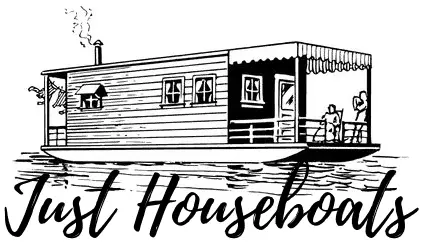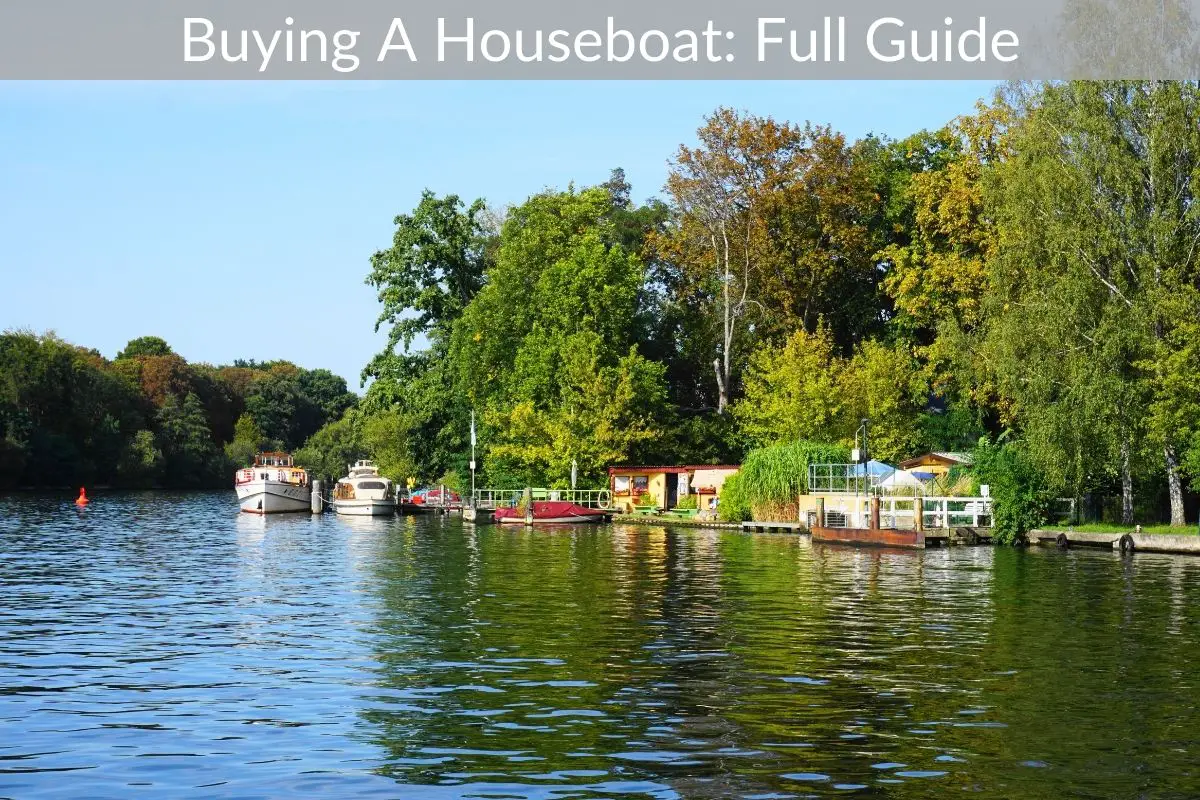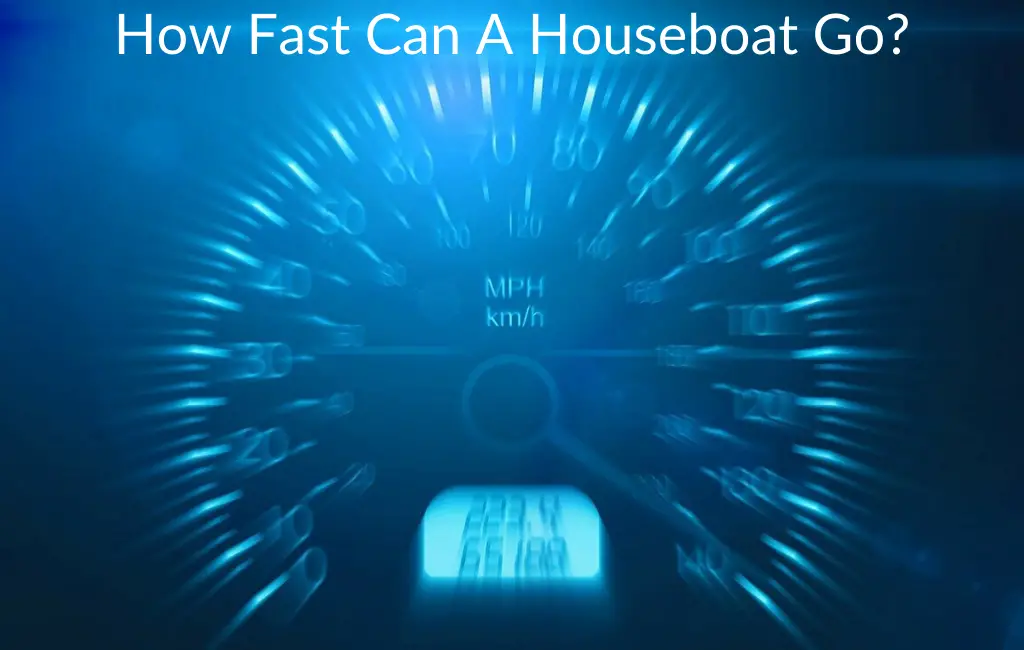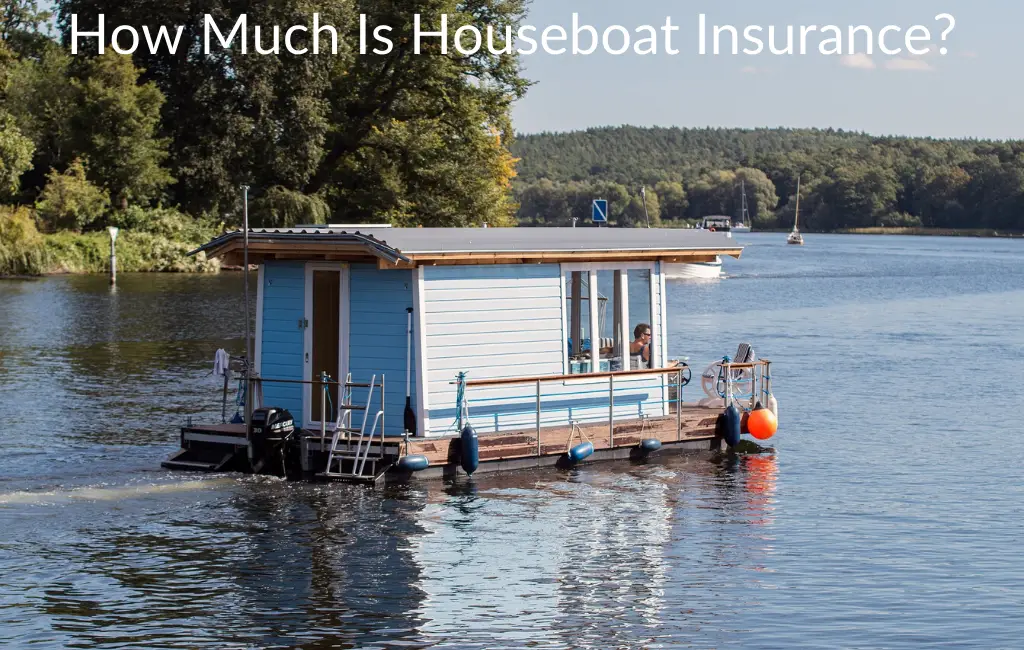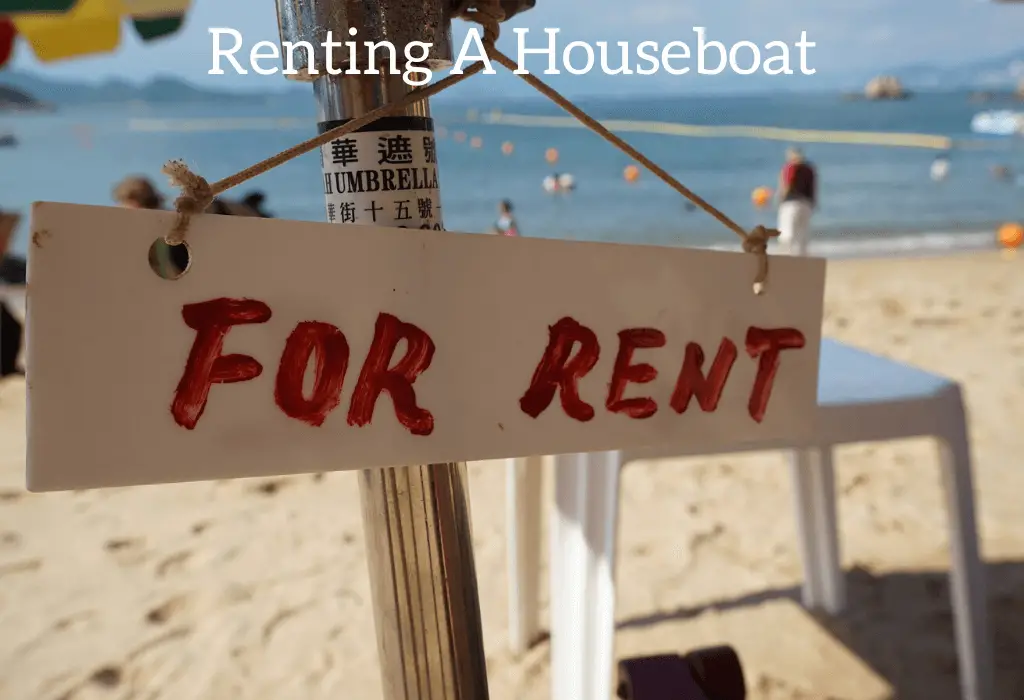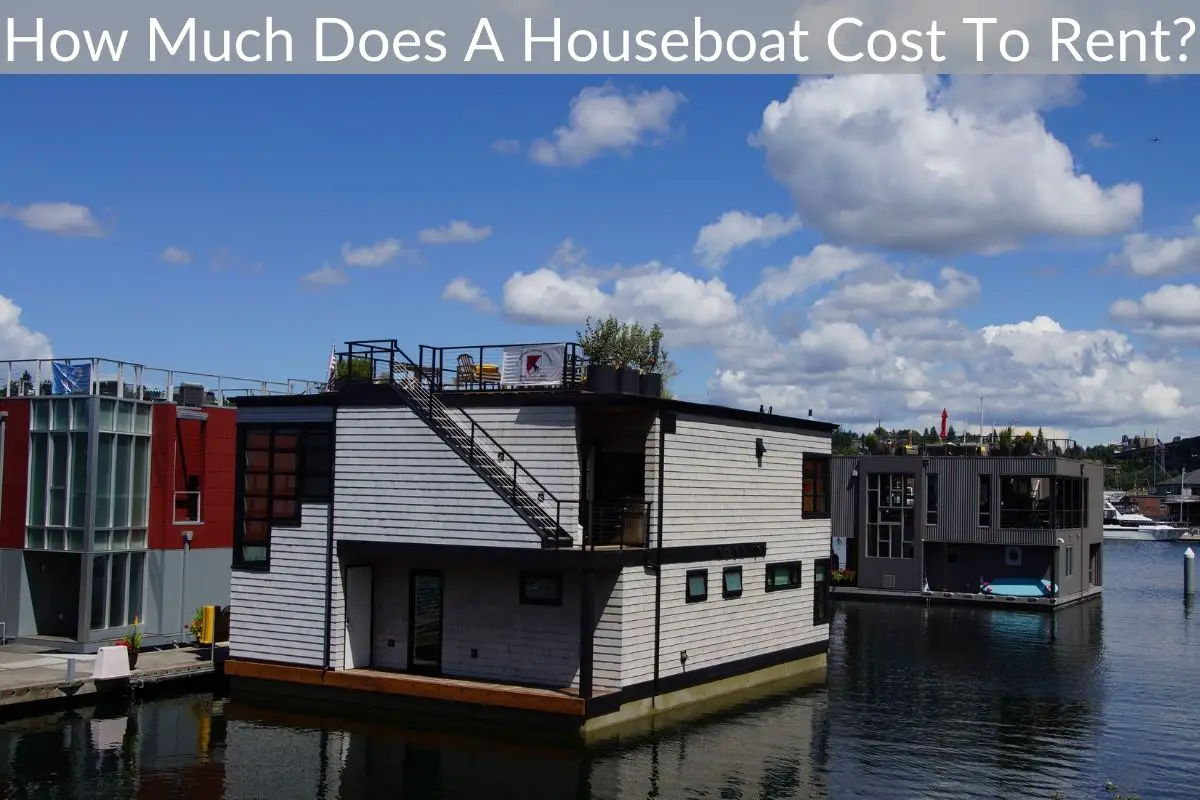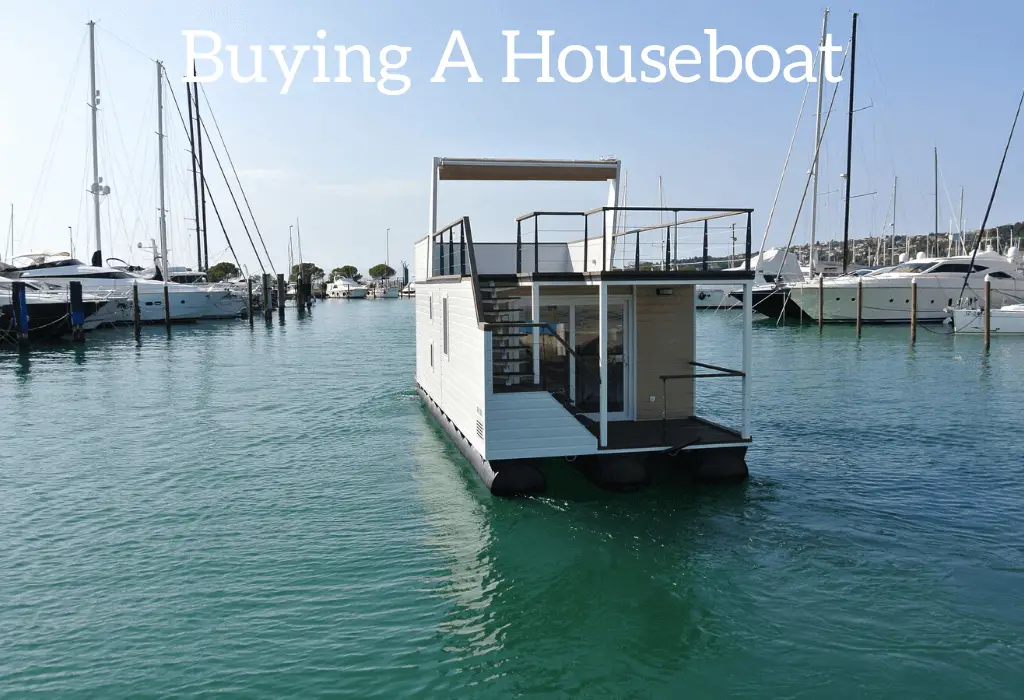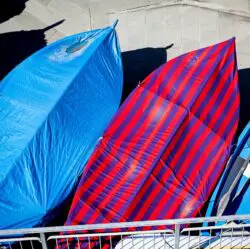If you have just recently heard about houseboats or are looking to join the houseboat life, this article is for you.
*This post may contain affiliate links. As an Amazon Associate we earn from qualifying purchases.
In this article we will cover 6 houseboat facts and stats that will be helpful in your houseboat journey. I will answer some common questions about sizing and even the different types of houseboats.
What Are The Types of Houseboats?
1. Barge
2. Pontoon
3. Stationary
4. Trailarable
5. Full Hull
6. Catamaran
1. Barge Houseboats
A barge houseboat is essentially a houseboat that is built on top of a barge deck. There are a few different benefits to having a barge houseboat including:
- More space to put things
- It’s a great place to put your tanks (fuel, water, sewage, etc.)
- Electrical and mechanical items can all go there
The major downside to a barge houseboat is that unless you have a tiny barge houseboat it is virtually impossible to move your houseboat out of the water.
Most barge style houseboats are quite large and some won’t be able to be moved from one place to another as the barge platform is simply too heavy to move around from place to place. This can be problematic or not a problem at all depending on your goal for your houseboat.
2. Pontoon Houseboats
A pontoon houseboat is a houseboat that is built on top of a pontoon base. This is the most common type of houseboat as there are a variety of size options with a pontoon houseboat.
There are 20ft pontoon houseboats available and all the way up to 65-75ft pontoon houseboats! One downside to pontoon houseboats is that they normally ride lower in the water, so if you are caught on the lake or river during a storm it can become a problem.
3. Stationary Houseboats
A stationary houseboat is simply a houseboat that is…. stationary! (crazy right) There are many places where houseboats can be docked full time and never move at all. Some houseboats are built on the water and will never move. Those can be common on private lakes or even on docks in the backwaters of a river.
The main issue with a stationary houseboat is obviously they don’t move. They are more used as an actual home that floats on the water rather than a recreation vessel. The other issue with stationary houseboats is it can be difficult to get them water, electricity, septic, etc. unless you own the land the boat is docked by.
4. Trailerable Houseboats
Trailerable houseboats are houseboats that are designed to be removed from the water and put on a trailer. These houseboats are normally shorter in length and in height as they have to be short enough to fit on a trailer but also short enough to travel on the road while being towed.
Trailerable houseboats can be nice to have if you only use your boat on long weekends or over the summertime. Having a bigger boat when on the water is nice but paying dock fees year around can add up fast. With a trailerable houseboat you can park it in your driveway or yard when you aren’t using it and not have to pay those fees.
The major downside to trailerable houseboats is that they are smaller than boats that you leave on the water. The average length for trailerable houseboats is 20-30 feet. Some can be slightly longer or smaller but that size makes it easy to get on and off a trailer while still giving you room on board.
That is obviously much smaller than a traditional houseboat (normally 40-50 feet long) so you have to decide if the smaller space on board is worth it to be able to trailer your houseboat.
5. Full Hull Houseboats
A full hull houseboat is one of the most popular types of houseboats. You have the additional space in the hull to store items but you can also go just about anywhere without any issues.
Full hull houseboats will normally sit higher in the water, so in the event of a storm you won’t have as many issues with water on board as you would with a pontoon style houseboat. Full hull houseboats come in a variety of shapes depending on which type of water you will be sailing in.
6. Catamaran
A catamaran houseboat is commonly confused with a pontoon houseboat because both have a float on each side to hold up the houseboat. One of the big differences is that on a catamaran you can actually use the space in the hull for storage where you can’t in a pontoon style houseboat. Catamarans normally handle very well and are smooth rides.
Catamarans are made in a variety of ways but most often they are made with a seamless mold that makes hull in one solid piece. The catamaran will often handle better than a full hull houseboat because there is far less drag. The catamaran hull is often made of fiberglass which also makes it much easier to maintain than other hull materials.
What is a houseboat’s engine size?
Just as with motors on cars or anything else, the engine size of a houseboat can vary from boat to boat and from manufacturer to manufacture. The average houseboat engine size is 90-150hp but can be much higher depending on the size of the boat.
The larger the houseboat the larger the motor size. Sometimes a larger houseboat will have 2 engines instead of one as a way to increase the horsepower.
How fast does a houseboat go?
The top speed for houseboats is 25-30mph. That would be houseboats that have twin motors with high horsepower for each. For houseboats that are more “cruisers” the average houseboat speed will be 7-10mph.
Of course the top speed for a specific houseboat depends on how many people and stuff you have on board (the heavier the boat, the slower it will go), how big of motor/motors it has, as well as the hull design.
If you are wanting to get to your destination as quickly as possible then you will want to look at Gibson or Harbor Master houseboats. They are always the fastest houseboats on the market.
What is the average houseboat size?
The average length of a houseboat can vary greatly but most houseboats will fall into the 40-60 foot long range. If your houseboat is any smaller than that then there isn’t a lot of room on board for friends and families. If your houseboat is larger than that the price for purchase and price for taking the boat on the water increases greatly.
If you are trying to decide on a houseboat size for you and your family, it is always best to rent a boat for a weekend that is the size you are looking at and test it out. If it feels anything but roomy when renting than you will want to go for a larger size.
The reason is that when renting a houseboat you often won’t have all of “your stuff” on board whereas when you own the boat you will often leave toys etc on board which will take up space. If when you rent the houseboat it seems roomy and that is the number of people you will often have on board then you should feel comfortable purchasing that size of a houseboat.
What is the average houseboat weight?
The weight of a houseboat can vary depending on if you built the houseboat yourself or if you bought it. Most houseboat manufacturers will use lighter materials to build the house part of the boat while many people who build their own houseboat will use heavier materials that will greatly increase the weight of the houseboat.
The average houseboat weighs 12,000-15,000 pounds. The larger the houseboat the more it will weigh. Each manufacturer will have some weight variations too so if you have a specific model in mind then you can contact the manufacturer and get an exact number.
What is the average cost to transport a houseboat?
Prices for transporting a houseboat varies based on the number of miles you are moving the boat, how much the boat weighs, how long and tall the boat is, and how easily accessible the pickup and drop off points are.
For example, I recently had a 46 foot houseboat moved from Tuscan, Arizona to Lake Havasu City, Arizona. The trip was around 300 miles one way and the cost was a little over $6,000. That means the average cost was around $20 a mile to get the houseboat moved.
Since that is just one example for me it could be less or more to move your houseboat. I didn’t go with the cheapest person as I did get some bids that were less but the one that I went with was by far the most professional and had moved many houseboats in the past.
The experience of the mover was important to me as I didn’t want to hire a new company that had never moved a houseboat before and have an issue with the boat getting damaged or destroyed during the move.
There are a few different national moving companies that you can contact as well as get local bids in your area when looking to get your houseboat moved. The main issue with almost all houseboats is that unless they are a trailerable houseboat you are going to spend a lot of money moving it from one place to another.
That wraps up our list of general houseboat stats. All of the above questions were things that I wondered about before buying my first houseboat. I hope that the answers have helped answer your houseboat questions.
As always,
Happy Boating
